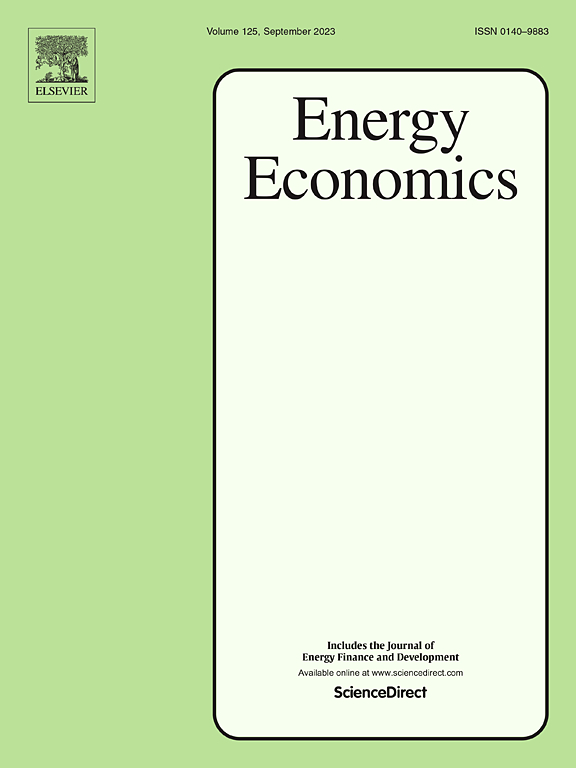Pollutant-specific scale economies in a supply chain under cap-and-trade regulation within the context of sustainable insurance
IF 14.2
2区 经济学
Q1 ECONOMICS
引用次数: 0
Abstract
This paper introduces a capped call option within a sustainable insurance model, where the insurer acts as a fund provider and supply chain manufacturers serve as fund borrowers. The risks associated with these borrowing manufacturers are capped through green lending, providing a structured way to manage financial exposure. Both upstream and downstream manufacturers use multiproduct production technology, which inherently produces pollutants. The study investigates how cap-and-trade limits influence pollution in carbon-intensive supply chains under varying cost structures. It reveals that stricter pollution caps enhance the insurer's profit margin when manufacturers adopt subadditive multiproduct technology—where joint production reduces costs—but diminish the margin when superadditive technology is employed, resulting in higher joint production costs. Moreover, tighter cap-and-trade restrictions may inadvertently lead to increased overall pollution, as the incentive to produce more under these multiproduct cost structures can outweigh the intended environmental benefits. These findings emphasize the importance of designing green finance and technology promotion policies that account for the specific cost dynamics within supply chains, ensuring that environmental, public health, and clean energy objectives are effectively balanced.
可持续保险背景下限额与交易监管下供应链中特定污染物的规模经济
本文在可持续保险模型中引入了一种上限看涨期权,其中保险公司作为资金提供者,供应链制造商作为资金借款人。与这些借贷制造商相关的风险通过绿色贷款得到限制,提供了一种管理财务风险的结构化方式。上游和下游制造商都使用多产品生产技术,这本身就会产生污染物。该研究调查了在不同成本结构下,限额与交易限制如何影响碳密集型供应链中的污染。研究发现,当制造商采用亚加性多产品技术联合生产时,严格的污染上限提高了保险公司的利润率,而当制造商采用超加性多产品技术联合生产时,严格的污染上限降低了保险公司的利润率,导致联合生产成本上升。此外,更严格的限额与交易限制可能会无意中导致总体污染的增加,因为在这些多产品成本结构下,生产更多产品的动机可能会超过预期的环境效益。这些发现强调了设计绿色金融和技术促进政策的重要性,这些政策应考虑到供应链内的具体成本动态,确保环境、公共卫生和清洁能源目标得到有效平衡。
本文章由计算机程序翻译,如有差异,请以英文原文为准。
求助全文
约1分钟内获得全文
求助全文
来源期刊

Energy Economics
ECONOMICS-
CiteScore
18.60
自引率
12.50%
发文量
524
期刊介绍:
Energy Economics is a field journal that focuses on energy economics and energy finance. It covers various themes including the exploitation, conversion, and use of energy, markets for energy commodities and derivatives, regulation and taxation, forecasting, environment and climate, international trade, development, and monetary policy. The journal welcomes contributions that utilize diverse methods such as experiments, surveys, econometrics, decomposition, simulation models, equilibrium models, optimization models, and analytical models. It publishes a combination of papers employing different methods to explore a wide range of topics. The journal's replication policy encourages the submission of replication studies, wherein researchers reproduce and extend the key results of original studies while explaining any differences. Energy Economics is indexed and abstracted in several databases including Environmental Abstracts, Fuel and Energy Abstracts, Social Sciences Citation Index, GEOBASE, Social & Behavioral Sciences, Journal of Economic Literature, INSPEC, and more.
 求助内容:
求助内容: 应助结果提醒方式:
应助结果提醒方式:


